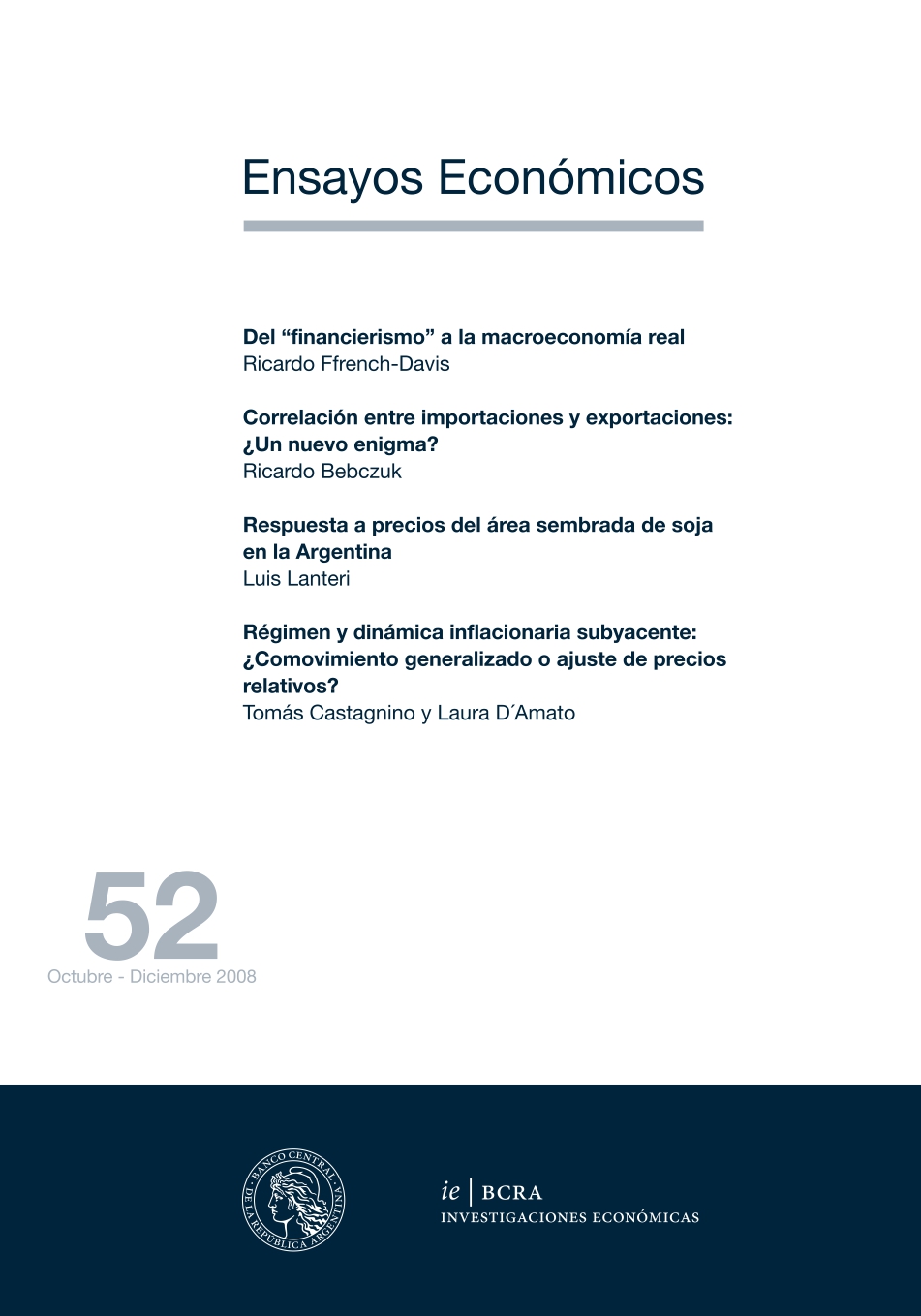Regime and Underlying Inflation Dynamics: ¿Generalized Comovement or Relative Price Adjustment?
Keywords:
Common Shocks, Inflation, Regime, Relative PricesAbstract
Using the principal components technique and frequency domain analysis, we study sectoral inflationary dynamics and its relationship with the monetary regime in Argentina and the United States during the last forty years. The results indicate that, contrary to the conventional notion of inflation, its dynamics is not exhausted by a generalized and persistent comovement of prices, but also reflect persistent relative price adjustments. The different nature of aggregate shocks prevailing in each economy gives its own characteristics to the dynamics of relative price adjustment. In Argentina, the tradable - non-tradable dynamic is a common feature of all the regimes studied, while in the United States, food and energy vs. the rest of the goods and services it is, but only in the presence of shocks. Furthermore, the comovement between sectoral inflations grows with the aggregate inflation rate. Furthermore, high inflation contexts make it difficult to adjust relative prices in response to aggregate shocks, because they induce a generalized comovement with a persistent effect on the price level.
JEL classification: C22 ; C43 ; E31 ; E52




